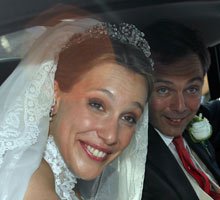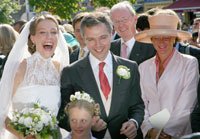Emily said:
What is the difference between a Marquise and a Countess? Are they comparable?
In the Benelux countries you have untitled and titled nobility.
Untitled nobles do have the right to use the predicate Jonkheer (Sir)/ Jonkvrouwe (Dame).
When the nobility of the family predates 1815 or when it is a titled family in which only the firstborn gets the title, Lord or Lady might be more appropriate. Don't be misled by the word 'untitled' because some of these families really are of ancient nobility and do have a dazzling ancestry.
Titled nobility can have the titles:
Ridder/Jonkvrouw
Chevalier/Dame
Baron/Barones
Baron/Baronne
Burggraaf/Burggravin
Vicomte/Vicomtesse
Graaf/Gravin
Comte/Comtesse
Markies/Markiezin
Marquis/Marquise
Hertog/Hertogin
Duc/Duchesse
Prins/Prinses
Prince/Princesse
In my country (the Netherlands) you can obtain nobility by recognition, by incorporation and by elevation.
Recognition
You belong to an old noble family which did exist in the then Netherlands before 1795. For an example with an Adelsdiploma given by a German Fürst or so. A recognition means that the Queen will, by Royal Decree, recognize your old rights and you will be enlisted into the Netherlands Nobility. (The d'Udekem d'Acoz family was recognized in 1816 by King Willem I of the Netherlands, Grand Duke of Luxembourg as being an ancient noble family. He bestowed the baronial rank, hereditary for the firstborn sons only).
Incorporation
You belong to foreign nobility and wants to be part of the Netherlands nobility. This is only possible with having (or obtaining) the Dutch citizenship. For an example: Queen Beatrix recognized the nobility of the naturalized Hungarians Miklós Kálmán Kennesey de Kenese and Tihamér József László von Ghyczy. They were given the right to use the hereditary predicate jonkheer/jonkvrouwe, their arms were recognized and they were enlisted into the Netherlands Nobility.
Elevation
You are 'elevated' into the nobility. This means that new nobility is created. Since 1999 this can only happen for members of the Royal House. This means that in the Netherlands practically no new nobility will be created (which was standing practice for some 50 years).
In 2002 miss Máxima Zorreguieta Cerruti was created a Princess in her own right, with her own arms and her own personal standard. She is no Princess
en titre courteoisie like Laurentien or Mabel. But she was not enlisted to the Netherlands Nobility because the Royal House is its own sort.
In 2004 Prince Friso left the Royal House upon his marriage with miss Mabel Wisse Smit. He was elevated into the Netherlands nobility indeed with the hereditary title of Count(ess). That was the last real new creation into the nobility so far. Prince Friso, Countess Luana, Countess Zaira, Countess Eloïse, Count Claus-Casimir and Countess Leonore will all belong to the new countly dynasty Van Oranje-Nassau van Amsberg.













